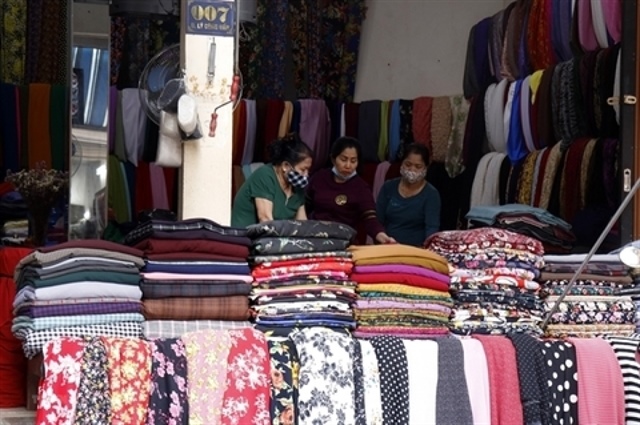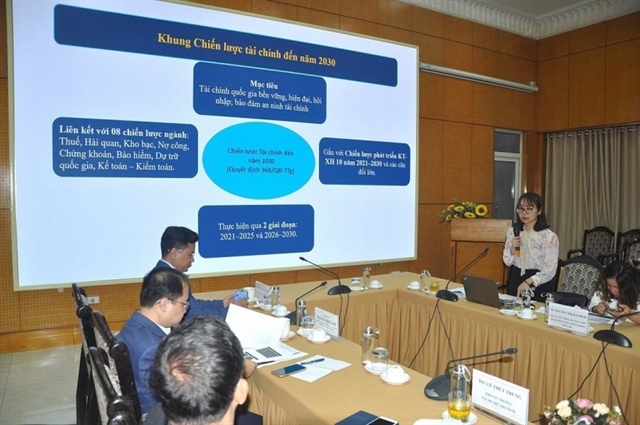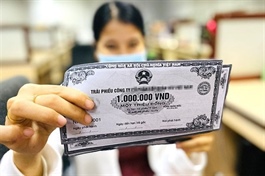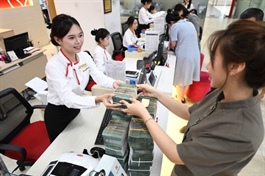Banks remain decisive to push against headwinds
Banks remain decisive to push against headwinds
Credit growth is becoming increasingly difficult to sustain amid mounting external pressures. Nguyen Quoc Hung, vice chairman and general secretary of the Vietnam Banks Association, talked with VIR’s Vy Vy how banks must go beyond restructuring growth models.
Amid growing shifts in other major economies, what strategic directions are banks pursuing to support businesses to overcome external challenges, and maintain the ambitious target of 16 per cent credit growth?

Nguyen Quoc Hung, vice chairman and general secretary of the Vietnam Banks Association |
Firstly, credit institutions need to promptly grasp the actual difficulties faced by businesses so as to provide appropriate support solutions, even though these institutions themselves may be significantly affected, especially those with outstanding loans in sectors such as electronic components, wood processing, and also seafood.
In parallel, by cutting costs, enhancing IT applications, and accelerating digital transformation, credit institutions can create more room to further reduce lending rates for businesses in general and import-export enterprises in particular.
Priority capital flows of banks, with preferential interest rates, should be directed towards the five key sectors, including manufacturing and import-export activities, alongside greater support for small and medium-sized enterprises, which remain especially vulnerable to market fluctuations.
It is essential to strengthen financial advisory and risk management support for enterprises, and to provide services such as trade finance, international payments, and foreign exchange risk hedging.
Perhaps most importantly, credit institutions must continue to maintain strict control over credit quality and conduct rigorous credit appraisals to prevent a rise in non-performing loans, particularly as the global market remains volatile.
Simultaneously, proactive provisioning and strengthening financial capacity are necessary to ensure system-wide safety and soundness.
What are the most critical bottlenecks the banking sector must resolve to effectively contribute to the 8 per cent GDP growth target?
Assessments of the internal strength of Vietnamese commercial banks indicate notable progress in both capital capacity and systemic stability. The capital adequacy ratio at many leading banks has approached or even surpassed Basel II requirements, with a clear trajectory towards Basel III alignment.
Strong net interest margins and effective control of non-performing loan (NPL) ratios, maintained below 2 per cent at many institutions, underscore prudent financial management.
Credit growth remains a key financial artery for the economy. Despite pressures from subdued credit demand, banks have managed to maintain reasonable growth levels, providing critical support for consumption, investment, and production.
That said, several structural constraints must be resolved for the banking sector to fulfill its potential as a growth engine for Vietnam’s GDP target.
Bad debts and credit quality are showing signs of deterioration. Data from the State Bank of Vietnam shows that as of December 2024, the total volume of on-balance-sheet bad debt, unresolved debt sold to the Vietnam Asset Management Company (VAMC), and potential NPLs amounted to 5.36 per cent of total outstanding loans across the system.
Compounding this is the underdevelopment of Vietnam’s capital markets, which fail to meet the long-term financing demands of the economy. As a result, the banking sector remains the primary funding channel for long-term investments, despite being more suitable for short- and medium-term lending.
Have there been any encouraging signals this year regarding NPL resolution?
The codification of Resolution No.42/2017/QH14 into law represented a highly promising and positive development for Vietnam’s efforts to address NPLs. Establishing a permanent, consistent legal framework is a critical precondition that will enable credit institutions to resolve bad debts more swiftly, decisively, and transparently.
The VAMC, regarded as the government’s vehicle for NPL resolution, plays a pivotal role in maintaining the safety and sustainability of the banking system. Since its establishment in 2013, the VAMC purchased on-balance-sheet bad debts via special bonds amounting to $17.86 billion in principle, with a purchase value of $16.4 billion.
With the recent amendments to the Law on Credit Institutions, do banks now have stronger legal tools to decisively tackle bad debts?
The Law on Credit Institutions has completed the legal framework, enabling credit institutions to proactively leverage their full potential in formulating long-term strategic directions, accelerating digital transformation, and expanding service offerings to enhance customer experience.
At the same time, the law has incorporated several provisions from Resolution 42. However, it still does not grant credit institutions the right to seize collateral assets or recover evidence involved in criminal and administrative proceedings.
As a result, the post-Resolution 42 period has witnessed mounting challenges in collateral asset recovery, contributing to a surge in NPLs.
Fortunately, to my knowledge, the government has submitted a proposal to the National Assembly to consider amending the Law on Credit Institutions to include provisions related to collateral asset seizure, asset freezing, and the return of evidentiary items.
This represents a positive step, facilitating credit institutions’ NPL recovery efforts. In turn, this may help banks reduce their cost of capital and potentially create room for lowering lending rates for customers.
- 09:01 21/05/2025




























